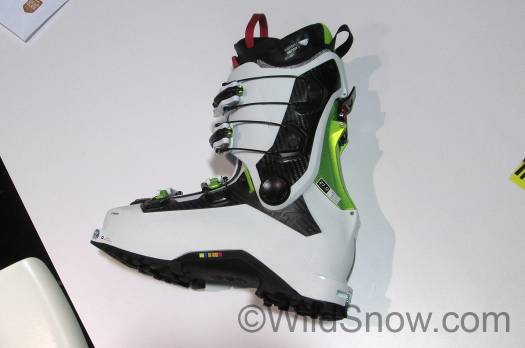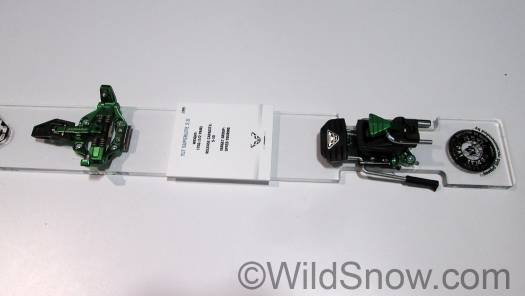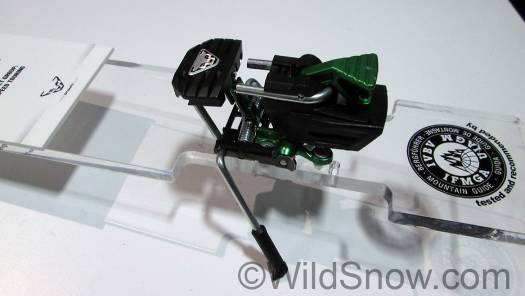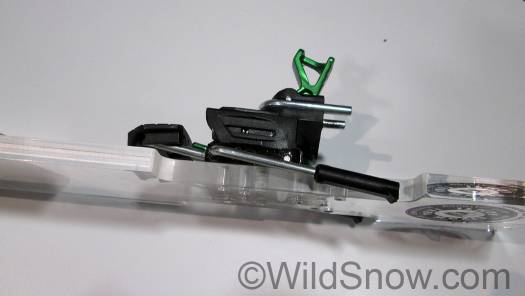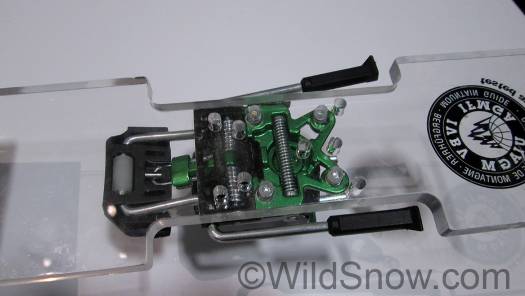Please note: On July 15, 2016 Dynafit issued a recall notice for all Khion boots in North America. See this blog post for up-to-date details.
We get tired of dog food and water bottles — stuff that seems to be the main currency of summer here at the trade show. Thus we do appreciate when a company brings some of their new backcountry skiing product to summer OR. I had fun going over the production version Dynafit Khion boot at the Salewa booth. We’ve covered the Khion before, but sharing a bit more about this design intensive boot seems wise. (Note that Khion comes in Carbon version and non-carbon, Khion Carbon is depicted here.)
First question that comes up about Khion is “how does this fit with the Vulcan in terms of shopping comparo?” Don’t over think it. You’re comparing walnuts to coffee beans. Vulcan is a tongue “cabrio” boot (meaning it closes with a vertical external tongue that provides forward support). Khion is an overlap shell boot.
Cabrio boots can be super stiff but they never have the smooth progressive cuff flex of a well designed overlap boot. Overlaps are harder to get into, and usually slightly heavier in equivalent flex if compared to a cabrio boot. Both types of boots can have good cuff mobility in ski touring mode, as both these models do (though I noticed in hand check that the Khion has light resistance to rearward flex in touring mode, which might easily be modded out.)
Funny thing, in my mind the biggest difference between Vulcan and Khion might simply be the boot buckles. Vulcan uses the same “Ultralock” type cuff lock as TLT 5/6. I like that system, but it does result in having a buckle sticking out to the side when in touring mode. Khion instead uses a clever mode/lean latch that’s quite small, pushes up against the cuff, and has near as I can tell zero play. More, Vulcan has the instep buckle on the side, while all the Khion buckles are up and out of the way on top of their respective area of the boot shell.
Bear in mind this blogpost is still a teaser; we’ll get more up about the Khion as fall and winter progress and we do real testing rather than quickie.
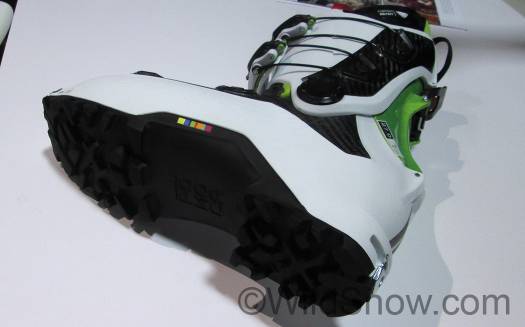
Another view of Khion showing aggressive sole lugging. Note that even with this thick sole, Dynafit has not figured out a way to thicken the vulnerable sole area just below the tech fittings at the toe.
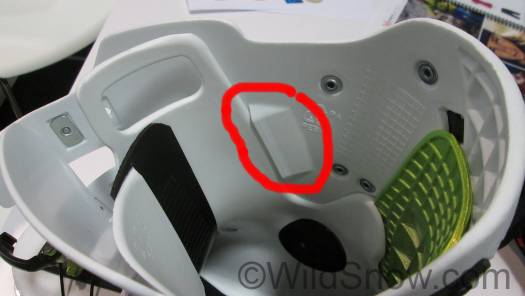
Khion has these aggro bump stops, aka hard stops molded into the shell cuff. Note the right side of the overlap having a higher area with a handle grip hole. This helps with opening the overlap for entry and exit.
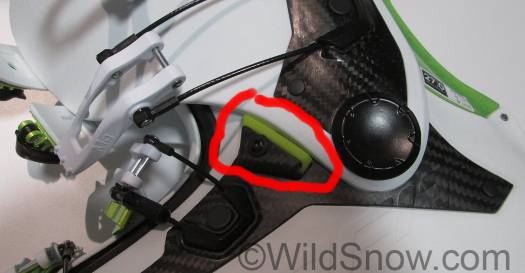
Interestingly, a removable and cushioned hard stop is also included. Note you could remove this as well as grinding out the molded stops in order to ease the cuff flex.
A couple more buckle related features: Upper two cuff buckles have three positions, and switch to the loosest setting with a tap of the hand. Lower buckles have magnets that hold them from flopping around when loose. I can see this being nice in a hut, but the magnets didn’t seem powerful enough to prevent snow from pulling the buckles open. It’s obvious a lot of thought went into the Khion buckles, overall super nice.
Now for the teaser continuation.
We still think the sweet spot in Dynafit’s extensive ski touring binding collection could be the new Superlite 2.0 (which we want to call the Green Machine 2.0). The removable brake intrigues us, and the weight is down there at 175 grams. Burning questions are, will the lowest heel lift position be low enough and will the fixed release value settings be good for most people, or will fiddling around with swapping the binding heel spring turn folks off? If the scene in Europe is any indication, you guys won’t care about those things and we’ll be seeing these installed on a record number of skis.
More here regarding TLT Superlite 2.0 heel lift and such.
WildSnow.com publisher emeritus and founder Lou (Louis Dawson) has a 50+ years career in climbing, backcountry skiing and ski mountaineering. He was the first person in history to ski down all 54 Colorado 14,000-foot peaks, has authored numerous books about about backcountry skiing, and has skied from the summit of Denali in Alaska, North America’s highest mountain.

